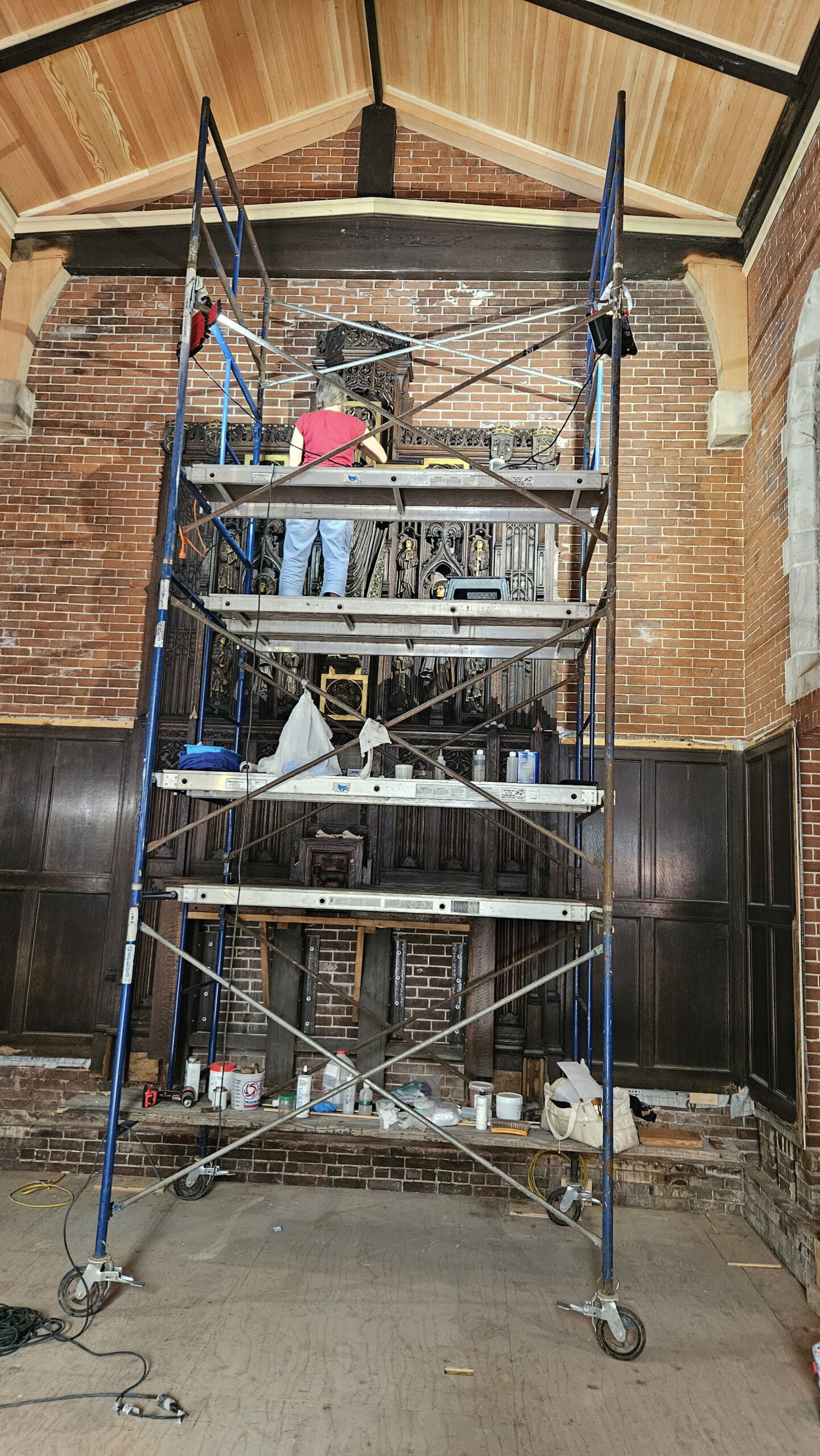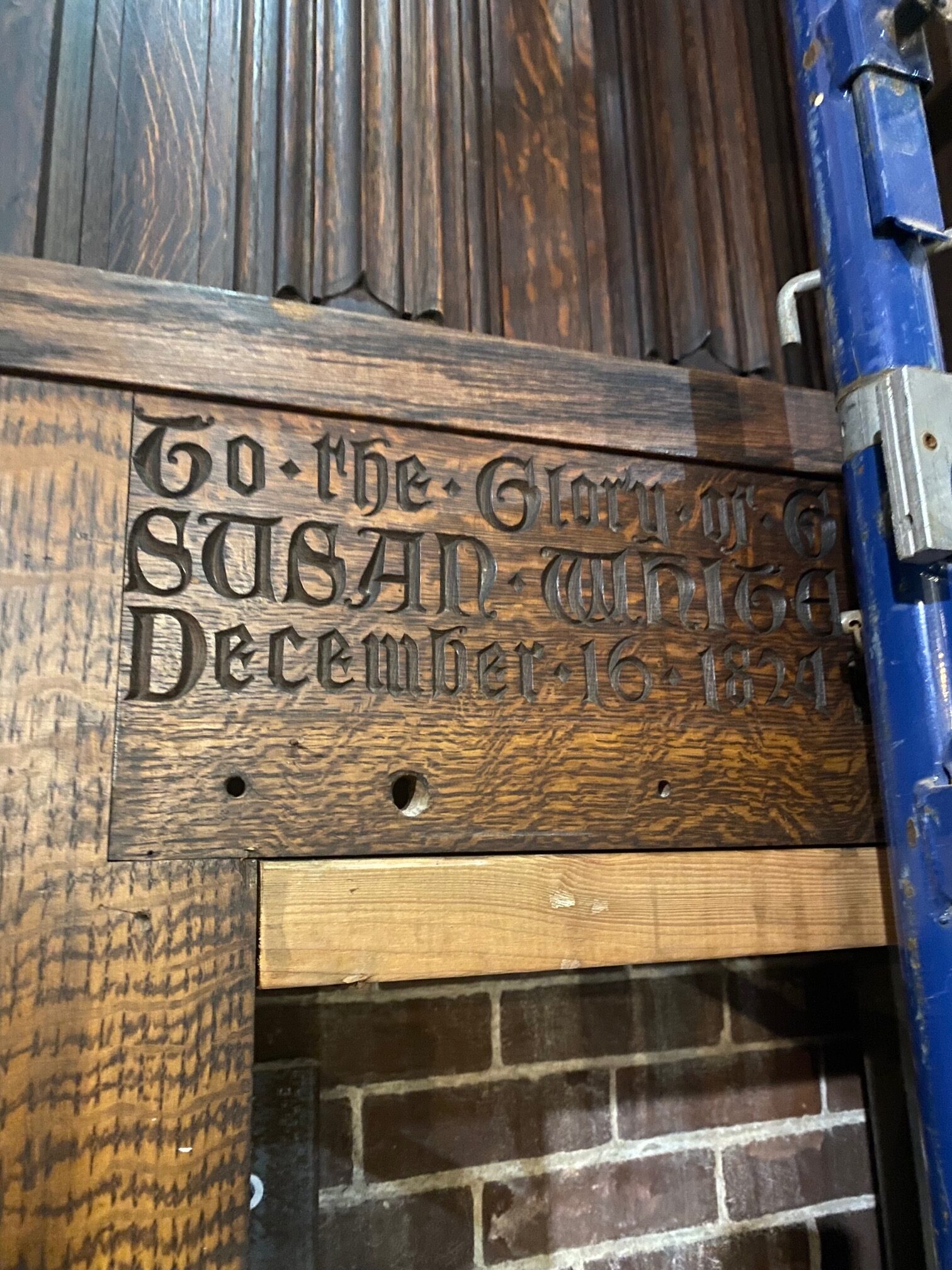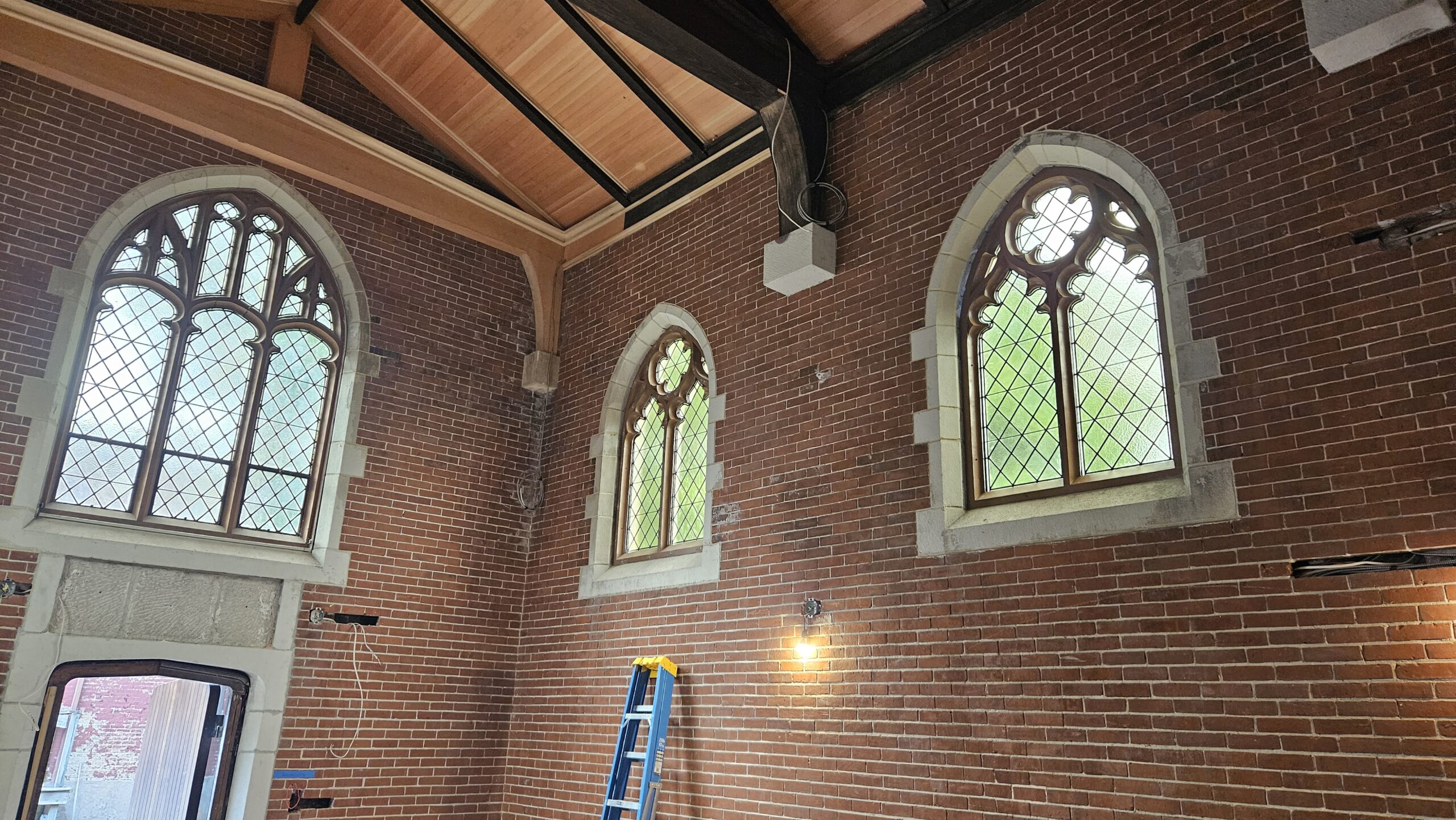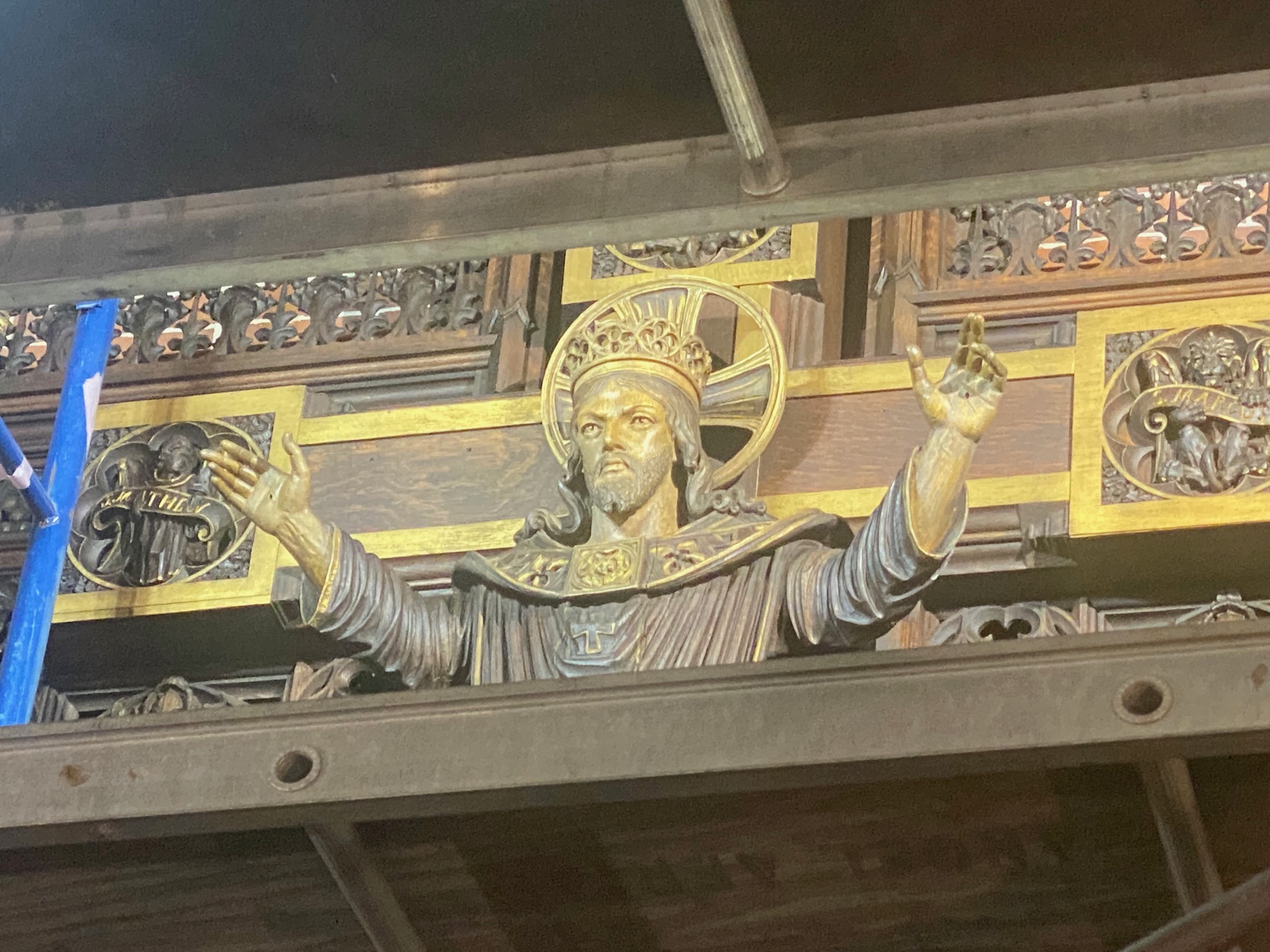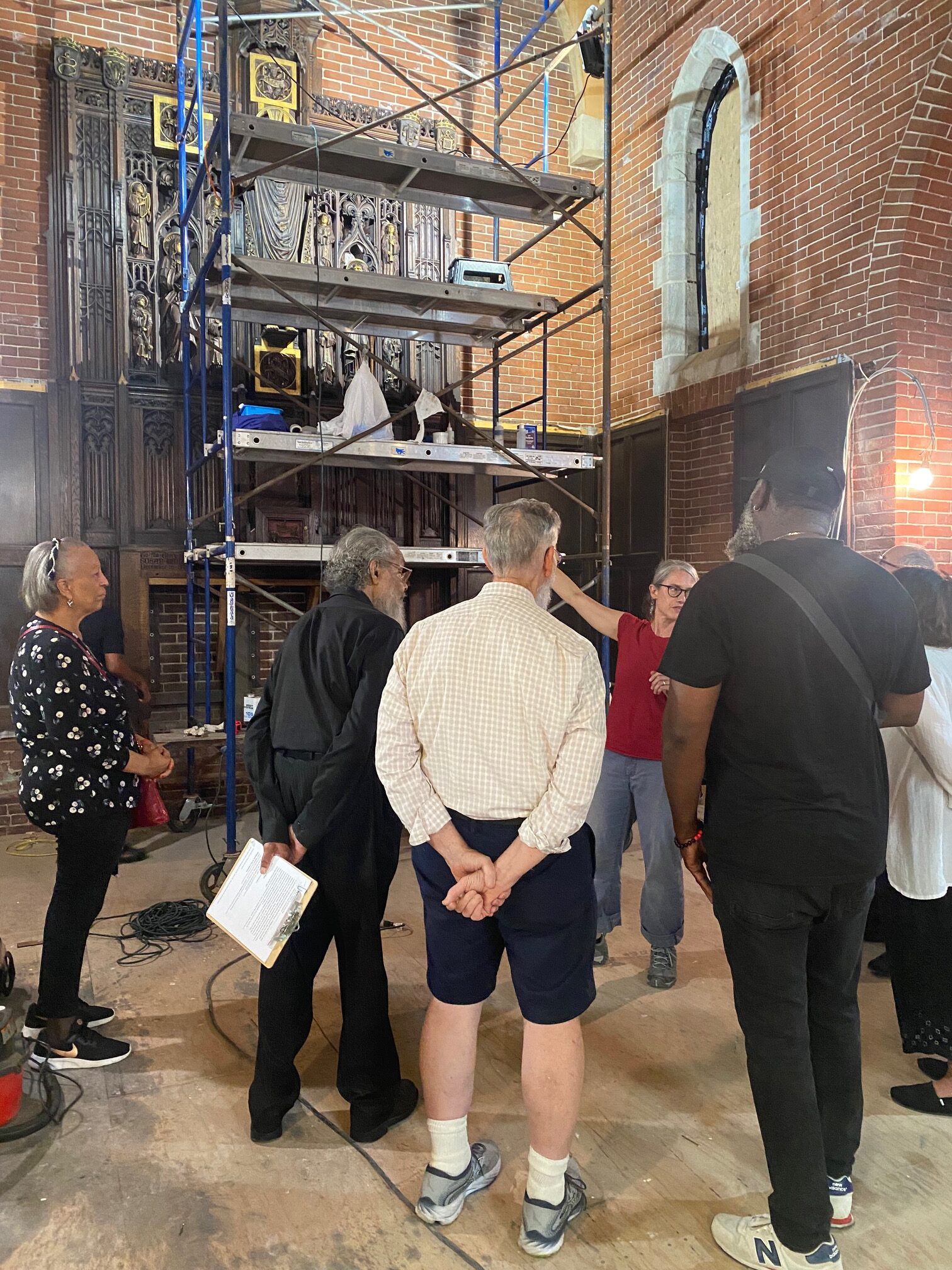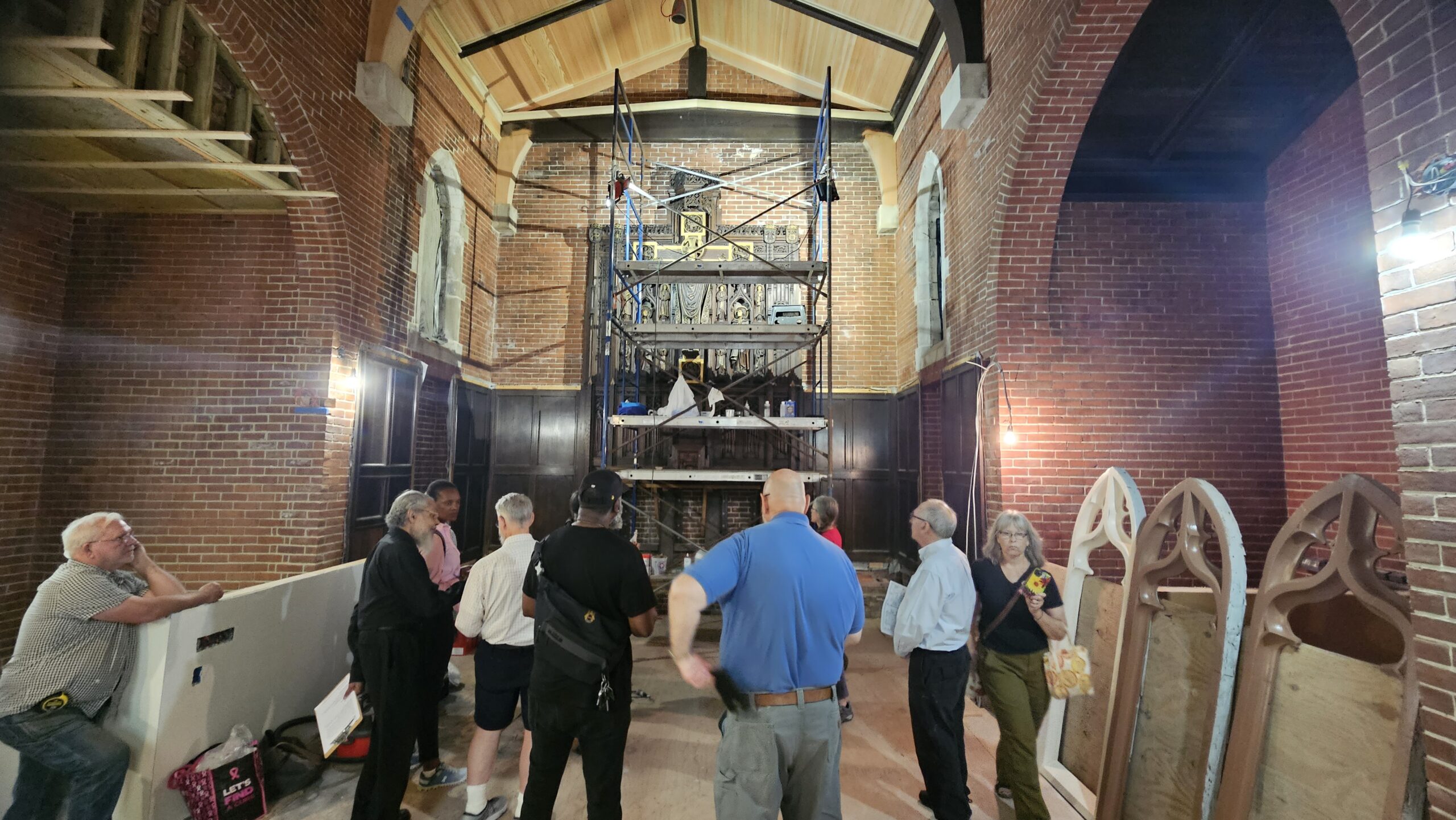
19 Aug 2024 Putting the finishing touches on St. Luke’s Chapel
HBI made a trip out to St. Luke’s Chapel earlier this summer, a beautiful little 1903 structure designed by acclaimed architect Ralph Adams Cram, tucked away on the grounds of St. John St. Jame’s Episcopal Church in Roxbury, to check in on the progress of the chapel’s restoration.
Historic Boston has been working with the St. John St. James parish and the Episcopal Diocese of Massachusetts to forge a new path forward for Roxbury’s oldest surviving brick structure, Ionic Hall (1800 -1804), the 1968 rear addition that had, until recently, served as the congregation’s sanctuary, and St. Luke’s Chapel (1903).
Since our last site visit in February, the chapel’s clear historic windows have been restored by Jim Anderson. The restoration of a series of stained glass windows has also been completed by Serpentino Stained Glass. The wooden reredos and intricate wood carving by renowned Boston wood-carver Johannes Kirchmayer are being meticulously restored by Decorative Objects Conservator, Wenda Kochanowski, and are nearly finished as well.
As final touches fall into place, the congregation is now tasked with selecting art to adorn their new worship space. The 1968 addition to Ionic Hall is decorated with the works of famed Boston artist Allan Rohan Crite. Crite is known for his paintings of African Americans amid daily life in Boston’s South End in the 1930s/40s. Of his work Crite mused: “Art like worship and study should be functional, serve a definite purpose and out of that purpose can come beauty of expression and all other decorative characteristics.” It is not known how Crite’s works came to be housed in the sanctuary of St. John St. James, but the inclusion of his works in the restored St. Luke’s Chapel would be a fitting continuation of his historic legacy, fulfilling what Crite himself hoped his work could do: bring purpose and meaning to the community he so lovingly sought to capture.




